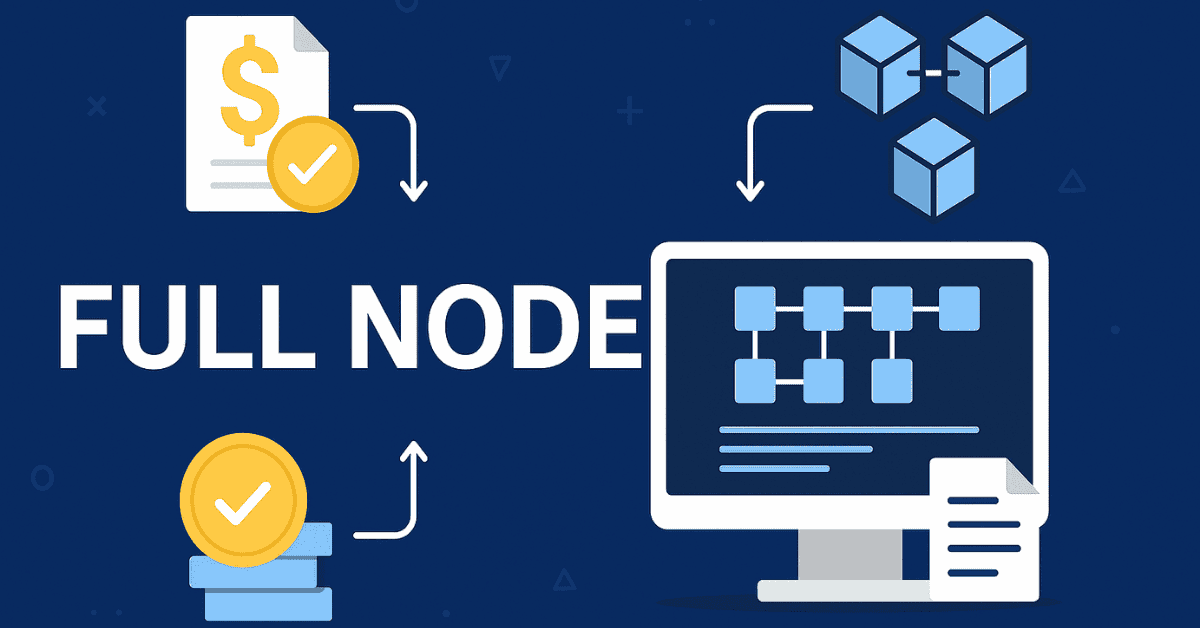
What is a Full Node – Role & Classification
1. What is a Full Node?
A full node is a network participant in the blockchain that stores the entire transaction history and all blocks. It runs blockchain software to independently verify each transaction and block, then relays them to other full nodes, ensuring consensus and network integrity.
2. How a Full Node Works
- Transaction & Block Validation: Checks new entries against protocol rules.
- Network Synchronization: Broadcasts verified data to reach consensus and update ledgers.
- Full Data Storage: Keeps the complete blockchain history, enabling recovery in case of disruptions.
3. Types of Full Nodes
Archival Nodes: Store the blockchain from genesis to latest block.
- Miner Nodes (PoW): Validate and mine new blocks.
- Masternodes: Offer services like InstantSend or PrivateSend, but don’t mine.
- Staking Nodes (PoS): Stake tokens to validate and earn rewards.
- Authority Nodes (PoA): Authorized to manage network participation.
Pruned Nodes: Keep only recent data, deleting old blocks to conserve storage.
4. Benefits of Running a Full Node
- Enhanced Security & Decentralization: Operate independently and strengthen network robustness.
- Transaction Control: Validate and broadcast transactions without third-party reliance.
- Monetary Rewards: Earn from transaction fees, staking, or mining activities.
5. Requirements for Running a Full Node
- Hardware: Needs strong CPU, ample RAM, and large storage (e.g., Bitcoin ~hundreds of GB, Ethereum ~1 TB).
- Technical Knowledge: Must install, configure, maintain, and troubleshoot blockchain client software.
- Stable Internet Connection: Ensures reliable synchronization and uptime.
6. Summary
Full nodes are essential for maintaining transparency, security, and decentralization in blockchain ecosystems. Though resource-intensive, they offer privacy, transaction autonomy, and vital support to the network's health.